Austin Gil
What the Heck is Edge Computing Anyway?
#1about 2 minutes
An introduction to edge compute using an analogy
Edge compute is defined as globally distributed serverless functions that run close to users, explained through an analogy of knitting dog hats.
#2about 3 minutes
Exploring the pros and cons of traditional servers
Traditional servers offer predictable pricing and full control but come with scaling challenges, idle costs, and maintenance responsibilities.
#3about 2 minutes
Understanding client-side rendering and its trade-offs
Client-side rendering moves compute to the user's device, enabling offline functionality but requiring larger initial downloads and lacking environmental control.
#4about 3 minutes
How static site generators deliver immediate responses
Static site generators pre-build all assets for immediate response times, but they cannot support dynamic content without other compute methods.
#5about 6 minutes
The power of cloud functions and serverless architecture
Cloud functions offer infinite scalability and a pay-for-what-you-use model, but they require stateless design and are tied to a specific region.
#6about 3 minutes
Explaining the edge through content delivery networks
The edge is a network of globally distributed computers, like a CDN, designed to reduce latency by serving content from a location near the user.
#7about 7 minutes
Combining serverless functions with a global CDN
Edge compute provides dynamic server-side functionality that executes close to the user, offering benefits like location awareness and key-value stores.
#8about 2 minutes
The rough edges and limitations of edge compute
Edge compute has limitations such as restricted runtimes, fewer resources, and challenges with data locality, especially when connecting to traditional databases.
#9about 4 minutes
Architectural patterns for when to use edge compute
Edge compute is ideal for scenarios like API orchestration but can introduce latency waterfalls in sequential requests that are far from the data source.
#10about 3 minutes
Practical use cases for edge compute in applications
Common applications for edge compute include dynamic ad injection, fast static search, redirect management, A/B testing, and stateless authorization.
#11about 3 minutes
How reducing latency impacts business and conversions
Even small latency improvements, like 100 milliseconds, can have a significant positive impact on sales and user conversion rates.
#12about 3 minutes
A look at a specific edge compute implementation
Akamai EdgeWorkers is presented as a mature edge compute solution with a large global network, customizable lifecycle hooks, and robust security features.
Related jobs
Jobs that call for the skills explored in this talk.
Full Stack Developer (all genders welcome)
ROSEN Technology and Research Center GmbH
Osnabrück, Germany
Senior
Architekt für Cloud Security - AWS (w|m|d)
zeb consulting
Frankfurt am Main, Germany
Remote
Junior
Intermediate
Senior
Matching moments

00:38 MIN
Understanding the challenges of edge computing deployments
From Code to Motion: Building an Autonomous Hat-Hunting Robot with Kubernetes & ML
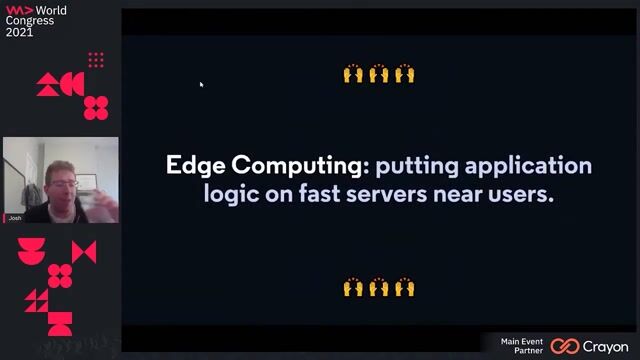
07:29 MIN
Routing traffic to microfrontends with edge workers
Microfrontends at Scale

30:18 MIN
Leveraging caching and edge computing for efficiency
Sustainable me. A tale of good design.
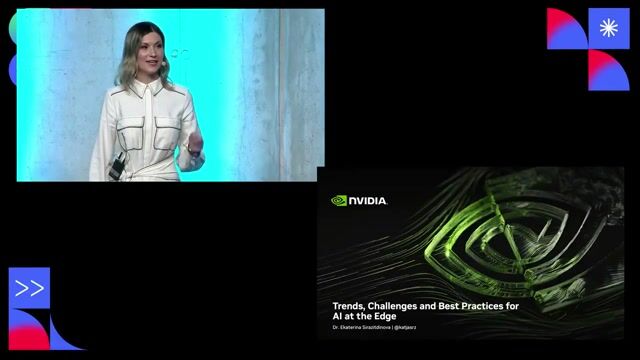
02:27 MIN
Defining AI at the edge and its industry applications
Trends, Challenges and Best Practices for AI at the Edge

27:17 MIN
Balancing distributed edge AI with centralized cloud computing
The Future of Computing: AI Technologies in the Exascale Era

00:43 MIN
Meeting modern application and data platform demands
Tomorrow's cloud data platforms - fully managed database-as-a-service (DBaaS)
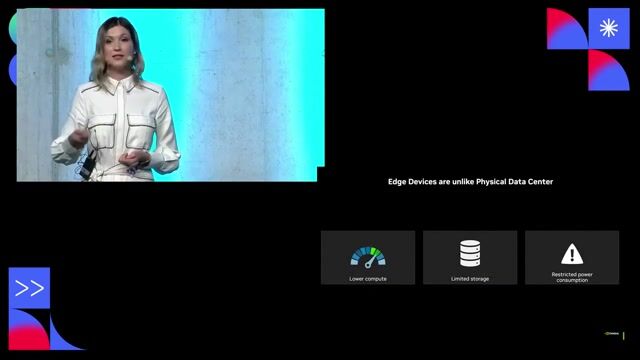
06:37 MIN
Understanding the unique constraints of edge devices
Trends, Challenges and Best Practices for AI at the Edge
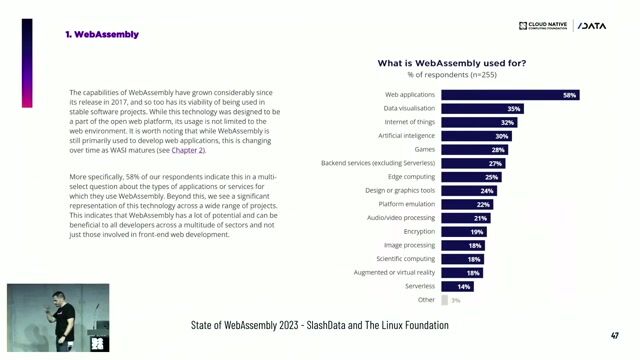
28:56 MIN
Current use cases and the future of WebAssembly
WebAssembly: The Next Frontier of Cloud Computing
Featured Partners
Related Videos
 57:32
57:32WebAssembly: The Next Frontier of Cloud Computing
Edoardo Dusi
 14:44
14:44Catching up on the basics you don't really need that much code
Chris Heilmann
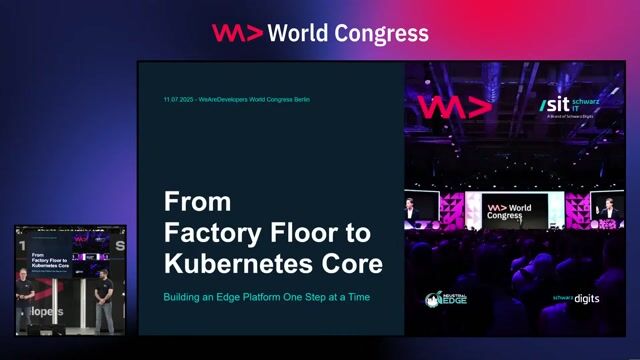 17:34
17:34From Factory Floor to Kubernetes Core: Building an Edge Platform One Step at a Time
Dean Oren & Stefan Belsch
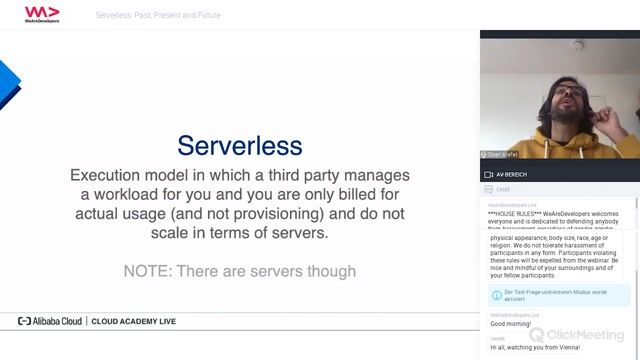 1:01:02
1:01:02Serverless: Past, Present and Future
Oliver Arafat
 57:44
57:44Protector Of The Realm
Sani Yusuf
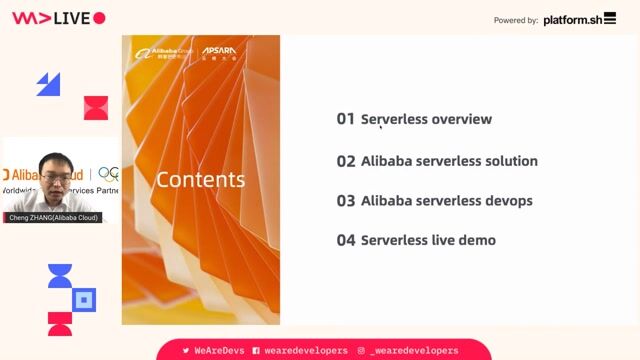 41:13
41:13Serverless on Cloud
Cheng Zhang
 29:50
29:50Trends, Challenges and Best Practices for AI at the Edge
Ekaterina Sirazitdinova
 19:01
19:01Simplifying edge app delivery: one workflow, thousands of devices
Christian Koep
Related Articles
View all articles



From learning to earning
Jobs that call for the skills explored in this talk.

AI & Embedded ML Engineer (Real-Time Edge Optimization)
autonomous-teaming
Canton of Toulouse-5, France
Remote
C++
GIT
Linux
Python
+1

AI & Embedded ML Engineer (Real-Time Edge Optimization)
autonomous-teaming
München, Germany
Remote
C++
GIT
Linux
Python
+1


Technical Program Manager, Edge Serving Capacity Delivery
Google
Charing Cross, United Kingdom
Intermediate

Edge Deployment Engineer (AI & Embedded Systems)
European Tech Recruit
Municipality of Bilbao, Spain
Intermediate
C++
GIT
Python
Machine Learning

Thesis on Smart Workloads Orchestration Across the Edge-to-Cloud Continuum
Ikerlan
Municipality of Valencia, Spain
Kubernetes

Edge Deployment Engineer (AI & Embedded Systems)
European Tech Recruit
Municipality of Murcia, Spain
Intermediate
C++
GIT
Python
Machine Learning

Edge Deployment Engineer (AI & Embedded Systems)
European Tech Recruit
Municipality of Vitoria-Gasteiz, Spain
Intermediate
C++
GIT
Python
Machine Learning

Edge Deployment Engineer (AI & Embedded Systems)
European Tech Recruit
Boiro, Spain
Intermediate
C++
GIT
Python
Machine Learning